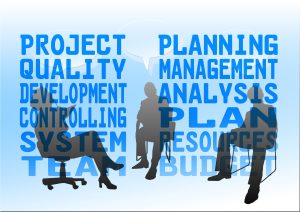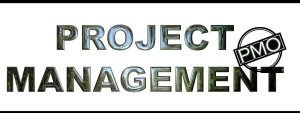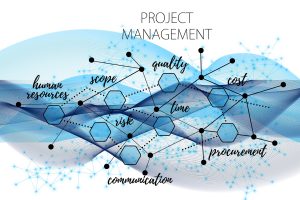
In the current business landscape, any organization that wants to be successful cannot afford to move forward without a clear and actionable vision for its IT infrastructure and initiatives. A strategic IT roadmap acts as the guiding blueprint, aligning technology with business goals, optimizing resources, and providing the flexibility to adapt to change. But how do you build an effective IT roadmap that ensures success? Let’s explore the key steps involved.
1. Align IT with Business Objectives
The first step in creating an effective IT roadmap is to ensure that IT aligns with the business’s overall goals. This means engaging with senior stakeholders across departments to understand their needs and how IT can support them. The aim is to position IT as an enabler of business success, not just a support function.
Key Actions:
- Conduct interviews and workshops with key stakeholders.
- Map the business’s strategic goals to key IT capabilities.
- Identify pain points and growth opportunities that IT can address.
2. Assess the Current IT Landscape
To chart a path forward, you need a thorough understanding of where you currently stand. Conduct an audit of your existing IT infrastructure, applications, and services to identify areas of strength, inefficiency, and risk. This will help pinpoint what needs to be improved or replaced.
Key Actions:
- Perform a comprehensive IT audit covering all systems, applications, and services.
- Evaluate existing KPIs to assess system performance.
- Identify vulnerabilities, inefficiencies, and gaps in the current setup.
3. Set Clear IT Goals and Objectives
Once you have a solid understanding of the current landscape, establish clear, measurable IT goals that are aligned with the broader business objectives. These goals should address both short-term needs and long-term strategic aspirations.
Key Actions:
- Define specific, measurable, achievable, relevant, and time-bound (SMART) IT goals.
- Align IT objectives with key business outcomes, such as revenue growth, operational efficiency, or customer satisfaction.
- Rank goals by priority and allocate resources accordingly.
4. Identify and Prioritize Critical Initiatives
Your roadmap needs to be actionable. Identify the IT initiatives that will drive your strategy forward. These could range from adopting new technologies to upgrading legacy systems. The key is to focus on initiatives that deliver real business value.
Key Actions:
- Brainstorm and list potential initiatives that align with your IT goals.
- Evaluate initiatives based on feasibility, impact, and resource requirements.
- Prioritize based on business value, timelines, and risk.
5. Develop a Realistic Timeline
A roadmap without clear timelines is simply a wish list. Break down each initiative into manageable phases, setting key milestones along the way. This will not only help track progress but also ensure accountability at every stage.
Key Actions:
- Create a detailed project timeline with clear start and end dates.
- Establish milestones and success criteria for each phase.
- Assign ownership and responsibilities to key team members.
6. Allocate Resources Effectively
No initiative can succeed without the right resources—whether it’s budget, personnel, or technology. Carefully plan the resource allocation for each initiative, ensuring that the necessary tools and skills are available. This may involve hiring new talent, retraining existing staff, or leveraging external expertise.
Key Actions:
- Develop a resource allocation plan, including budget forecasts and staffing needs.
- Identify skills gaps and plan for training or recruitment where necessary.
- Engage with external vendors or consultants for specialized initiatives.
7. Implement Robust Risk Management
Risk management is critical to any IT initiative. Proactively identify potential risks and develop contingency plans to mitigate their impact. Regularly reassess risks as initiatives progress, ensuring that your risk management strategy remains effective.
Key Actions:
- Conduct a thorough risk assessment for each initiative.
- Develop and document contingency plans for key risks.
- Review and update risk mitigation strategies at regular intervals.
8. Establish Strong Governance and Clear Communication
Good governance ensures that IT initiatives remain on track and aligned with broader business goals. This requires clear communication and structured oversight. Governance structures should include cross-departmental representation, ensuring that IT decisions support the entire organization.
Key Actions:
- Form a governance committee that includes stakeholders from key departments.
- Develop a communication plan that keeps all stakeholders informed and engaged.
- Deliver regular progress updates, and adjust strategies based on feedback.
9. Monitor, Review, and Adapt
Your IT roadmap isn’t a static document—it should evolve as your business and the technology landscape change. Regularly reviewing progress, gathering feedback, and adapting the roadmap ensures it remains relevant and aligned with business objectives.
Key Actions:
- Track progress against established milestones and KPIs.
- Hold quarterly reviews with stakeholders to assess progress and gather input.
- Adjust the roadmap as necessary to reflect changing business priorities or external factors.
10. Leverage Data-Driven Decision Making
Incorporating data-driven insights into your IT strategy ensures that decisions are informed by objective analysis rather than assumptions. This could involve leveraging analytics platforms to monitor performance, identifying trends, and predicting future challenges.
Key Actions:
- Implement real-time analytics to measure performance across all initiatives.
- Use predictive analytics to forecast future IT needs and risks.
- Base decisions on data insights to optimize resource allocation and initiative prioritization.





 The “Measure Twice and Cut Once” Approach
The “Measure Twice and Cut Once” Approach


 The Silent Disruptor – Why Lack of Trust is a Barrier to Success
The Silent Disruptor – Why Lack of Trust is a Barrier to Success


 Technical prowess alone is no longer enough to lead in IT. The most successful IT leaders are those who have mastered the art of blending their deep technological expertise with a strong understanding of business operations.
Technical prowess alone is no longer enough to lead in IT. The most successful IT leaders are those who have mastered the art of blending their deep technological expertise with a strong understanding of business operations.